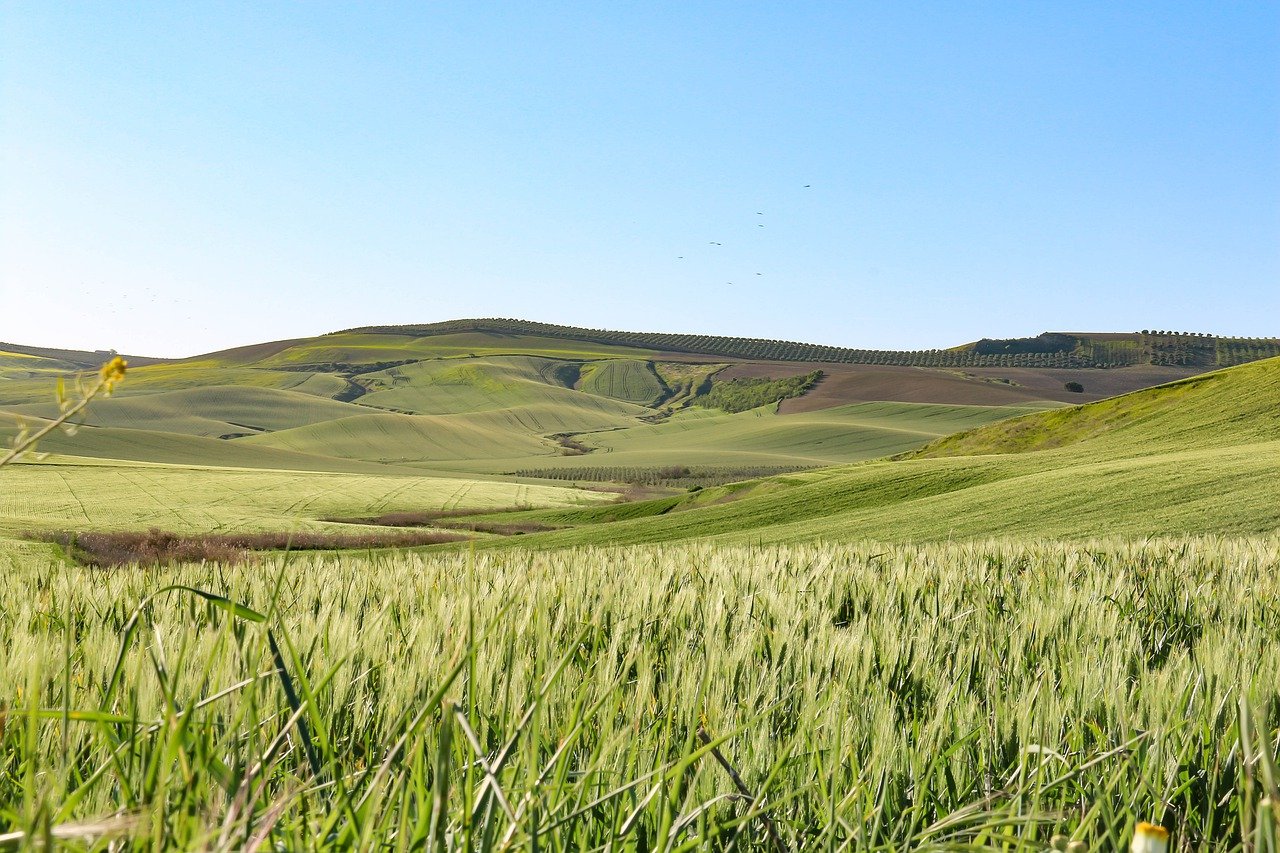Spain Video
Local Celebrations and Holidays: What to Expect in Spain
Spain is known for its vibrant and lively celebrations, with each region having its own unique traditions and festivals. From religious processions to colorful parades, Spain offers a wide range of festivities throughout the year. In this article, we will explore some of the most popular local celebrations and holidays in Spain and what you can expect when you visit.
1. Semana Santa (Holy Week)
Semana Santa, or Holy Week, is one of the most important religious celebrations in Spain. It takes place in the week leading up to Easter Sunday and is observed with great solemnity and devotion. Processions featuring religious statues and floats are carried through the streets, accompanied by traditional music and chants. Each region has its own unique traditions and rituals during Semana Santa, making it a fascinating time to visit Spain.
- Processions: The highlight of Semana Santa is the processions, where religious brotherhoods carry elaborate floats depicting scenes from the Passion of Christ. These processions can last for several hours and attract large crowds of spectators.
- Nazarenos: Participants in the processions, known as nazarenos, wear traditional robes and pointed hoods. They carry candles or wooden crosses and walk barefoot as a sign of penance and devotion.
- Traditional Food: During Semana Santa, certain traditional dishes are prepared, such as torrijas (sweet fried bread), bacalao (salted cod), and potaje de vigilia (a meatless stew). These dishes are often enjoyed with family and friends.
2. Feria de Abril (April Fair)
The Feria de Abril, or April Fair, is a week-long festival held in Seville to celebrate the arrival of spring. The fairgrounds are transformed into a colorful and lively spectacle, with hundreds of temporary casetas (marquees) set up for dancing, eating, and socializing.
- Sevillanas: The traditional dance of Seville, known as sevillanas, is an integral part of the Feria de Abril. People dress in traditional flamenco attire and dance in pairs to lively music.
- Horse Carriages: The fairgrounds are filled with beautifully decorated horse carriages, adding to the festive atmosphere. Many locals and visitors enjoy taking a ride in these carriages during the fair.
- Gastronomy: The Feria de Abril is also a culinary delight, with a wide variety of traditional Andalusian dishes and tapas available. Visitors can indulge in delicious food and drinks while enjoying the vibrant ambiance of the fair.
3. La Tomatina
La Tomatina is a unique festival held in the town of Buñol, where participants engage in a massive tomato fight. Thousands of people gather in the streets to throw tomatoes at each other, creating a sea of red and turning the town into a giant tomato battleground.
- The Tomato Fight: The main event of La Tomatina involves participants throwing tomatoes at each other for about an hour. Trucks loaded with ripe tomatoes drive through the town, supplying the ammunition for the fight.
- Rules and Regulations: Despite the chaotic nature of the event, there are certain rules in place to ensure safety. Participants must squish the tomatoes before throwing them to avoid causing injuries, and they must also respect the instructions given by the organizers.
- Tomato-Free Zone: While the entire town is involved in the tomato fight, there is a designated tomato-free zone for those who prefer to observe the festivities without getting messy.
4. San Fermín Festival
The San Fermín Festival, held in Pamplona, is famous for its running of the bulls. Thousands of thrill-seekers gather to run alongside the bulls through the streets of the city, testing their bravery and agility.
- Encierro (Running of the Bulls): The highlight of the San Fermín Festival is the daily encierro, where participants run in front of a group of bulls through a designated route. This tradition dates back to the 14th century and has become synonymous with the festival.
- The Chupinazo: The festival begins with the Chupinazo, a rocket launch that signals the start of the festivities. Thousands of people gather in the main square to witness this exciting moment.
- Traditional Attire: Many participants and spectators choose to wear traditional white clothing and red scarves during the festival. This creates a visually striking scene as the streets are filled with people dressed in these colors.
5. La Feria de Málaga
La Feria de Málaga is a vibrant summer festival held in the city of Málaga. It combines traditional Andalusian culture with modern entertainment, offering a wide range of activities for visitors of all ages.
- Daytime Activities: During the day, the fairgrounds are filled with attractions such as amusement rides, traditional games, and live music performances. There are also various food stalls offering local delicacies.
- Evening Celebrations: As night falls, the fairgrounds come alive with colorful lights and bustling activity. People gather in the casetas to dance sevillanas and enjoy live flamenco performances.
- Fireworks: The festival concludes with a spectacular fireworks display, lighting up the night sky and providing a fitting end to the festivities.
Spain Image 1:

6. La Tomatina
La Tomatina is a unique festival held in the town of Buñol, where participants engage in a massive tomato fight. Thousands of people gather in the streets to throw tomatoes at each other, creating a sea of red and turning the town into a giant tomato battleground.
- The Tomato Fight: The main event of La Tomatina involves participants throwing tomatoes at each other for about an hour. Trucks loaded with ripe tomatoes drive through the town, supplying the ammunition for the fight.
- Rules and Regulations: Despite the chaotic nature of the event, there are certain rules in place to ensure safety. Participants must squish the tomatoes before throwing them to avoid causing injuries, and they must also respect the instructions given by the organizers.
- Tomato-Free Zone: While the entire town is involved in the tomato fight, there is a designated tomato-free zone for those who prefer to observe the festivities without getting messy.
7. Fiesta de San Juan
Fiesta de San Juan, also known as the Night of San Juan, is a celebration held on the eve of the summer solstice. It is believed to ward off evil spirits and bring good luck for the year ahead.
- Bonfires and Fireworks: Bonfires are lit on the beaches and in public squares, where people gather to celebrate and enjoy the warm summer night. Fireworks displays light up the sky, creating a magical atmosphere.
- Jumping Over the Flames: A popular tradition during Fiesta de San Juan is to jump over the bonfires, as it is believed to cleanse and purify the soul. It is a symbolic act of leaving behind the past and starting anew.
- Beach Parties: Many coastal towns and cities organize beach parties during Fiesta de San Juan. People gather to dance, sing, and celebrate until the early hours of the morning.
8. La Feria de Sevilla
La Feria de Sevilla, also known as the April Fair, is a week-long celebration held in Seville. It is one of the most important and traditional events in the city, attracting both locals and tourists.
- Traditional Attire: During the fair, many women wear flamenco dresses and men dress in traditional suits. The fairgrounds are filled with vibrant colors and lively music, creating a festive atmosphere.
- Casetas: The fairgrounds are divided into numerous casetas, which are private tents or marquees. These casetas are owned by individuals, groups, or organizations, and they offer food, drinks, and music for visitors to enjoy.
- Flamenco Performances: Flamenco music and dance are an integral part of La Feria de Sevilla. Visitors can watch live performances by professional flamenco artists or even join in the dancing themselves.
Spain Image 2:

9. La Mercè
La Mercè is the annual festival of Barcelona, held in honor of the city’s patron saint, Our Lady of Mercy. It is a week-long celebration filled with cultural events, music performances, and street parades.
- Castellers: One of the highlights of La Mercè is the castellers, or human towers. Teams compete to build the tallest and most complex human towers, showcasing strength, balance, and teamwork.
- Correfoc: The correfoc, or fire run, is a thrilling event where people dressed as demons and mythical creatures run through the streets with fireworks and sparklers. Spectators can either watch from a safe distance or join in the festivities.
- Concerts and Performances: Throughout the festival, there are numerous concerts and performances held in various venues across the city. From traditional Catalan music to contemporary acts, there is something for everyone to enjoy.
10. La Tomatina
La Tomatina is a unique festival held in the town of Buñol, where participants engage in a massive tomato fight. Thousands of people gather in the streets to throw tomatoes at each other, creating a sea of red and turning the town into a giant tomato battleground.
- The Tomato Fight: The main event of La Tomatina involves participants throwing tomatoes at each other for about an hour. Trucks loaded with ripe tomatoes drive through the town, supplying the ammunition for the fight.
- Rules and Regulations: Despite the chaotic nature of the event, there are certain rules in place to ensure safety. Participants must squish the tomatoes before throwing them to avoid causing injuries, and they must also respect the instructions given by the organizers.
- Tomato-Free Zone: While the entire town is involved in the tomato fight, there is a designated tomato-free zone for those who prefer to observe the festivities without getting messy.
11. La Tomatina
La Tomatina is a unique festival held in the town of Buñol, where participants engage in a massive tomato fight. Thousands of people gather in the streets to throw tomatoes at each other, creating a sea of red and turning the town into a giant tomato battleground.
- The Tomato Fight: The main event of La Tomatina involves participants throwing tomatoes at each other for about an hour. Trucks loaded with ripe tomatoes drive through the town, supplying the ammunition for the fight.
- Rules and Regulations: Despite the chaotic nature of the event, there are certain rules in place to ensure safety. Participants must squish the tomatoes before throwing them to avoid causing injuries, and they must also respect the instructions given by the organizers.
- Tomato-Free Zone: While the entire town is involved in the tomato fight, there is a designated tomato-free zone for those who prefer to observe the festivities without getting messy.
Spain Image 3:

12. Las Fallas de Valencia
Las Fallas de Valencia is a unique festival held in Valencia, known for its elaborate and artistic sculptures made of paper and wood. The festival culminates in the burning of these sculptures, creating a spectacular display of fire and light.
- Fallas Sculptures: Throughout the city, enormous and intricate sculptures, called fallas, are installed in the streets. These sculptures depict satirical scenes and characters, often with a humorous or critical tone.
- Fireworks and Firecrackers: The festival is accompanied by daily firework displays and the constant sound of firecrackers. The explosions and colorful pyrotechnics add excitement and energy to the atmosphere.
- La Cremà: The highlight of Las Fallas is the “La Cremà,” where all the fallas sculptures are set on fire on the final night of the festival. This symbolic act represents the purification and renewal of the city.
Conclusion
Spain offers a rich tapestry of local celebrations and holidays, each with its own unique traditions and customs. From the religious processions of Semana Santa to the thrilling bull runs of San Fermín, there is something for everyone to experience and enjoy. Whether you are fascinated by cultural festivals, gastronomy, or simply immersing yourself in the vibrant atmosphere, Spain’s local celebrations and holidays will leave a lasting impression. Plan your visit accordingly and immerse yourself in the rich cultural heritage of this beautiful country.
References
- spain.info
- andalucia.org
- visitvalencia.com
- barcelonaturisme.com
- sevillatourism.es


